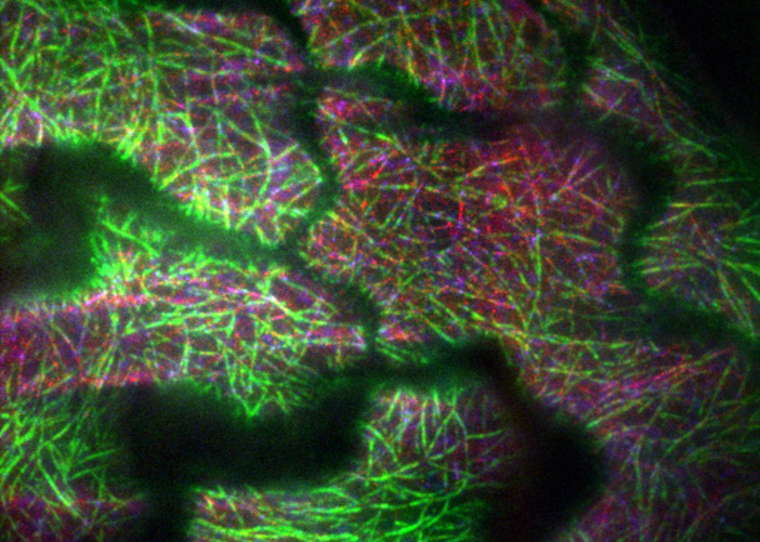Multi-tasking much, these days? The microtubule cytoskeleton is, too.
This network of protein filaments is essential to cellular processes in both plants and animals. The microtubule cytoskeleton supports a variety of tasks — from cell division, to helping the cell form its shape, to moving substances around within a cell. Its amazing versatility as a kind of scaffolding is tied to its ability to change configuration based on a cell’s needs.

Biologist Ram Dixit in Arts & Sciences at Washington University in St. Louis has been awarded $2 million by the National Institutes of Health to study this important shape-shifter. Dixit’s research will help uncover the mechanisms underlying the dynamics, spatial organization and function of the microtubule cytoskeleton.
Defects in these mechanisms often lead to problems such as cancer and neurodegenerative diseases in humans — and affect the growth, stature and yield of plants.
“Unlike the scaffolding that people use to build a building, the cytoskeleton is highly dynamic and is able to change its configuration in response to developmental and environmental signals. This allows cells to adapt to changing conditions,” said Dixit, professor of biology and director of the plant and microbial biosciences graduate program.
“Components of the microtubule cytoskeleton are quite well-conserved between plants and animals,” Dixit said. “We use plants as a model system because they provide several advantages: because their cortical microtubules are present beneath the plasma membrane, they are accessible to high-resolution imaging; we can conduct experiments in whole, living seedlings instead of cell cultures; and we can use the power of Arabidopsis genetics for mechanistic studies.”
As part of this new effort, Dixit plans to develop a microfluidics chip platform to analyze the relationships between sets of microtubule regulatory proteins.
“This is a new direction in the lab and will make use of the Nano Research and Environmental Facility at WashU,” Dixit said. “A microdevice will allow us to perform controlled experiments that are currently hard to do in cells due to the confounding complexity of whole-cell and whole-organism experiments. These experiments will allow us to study the role of concurrent microtubule regulatory proteins and the effects of volume confinement, cell geometry and mechanical feedback.
“Our success is made possible because of the excellent students and postdocs in my lab,” he said. “Their creativity and hard work leads to exciting discoveries and to a fun and stimulating lab environment.”

Dixit’s new grant is from the National Institute of General Medical Sciences — the part of the National Institutes of Health that supports basic research to lay the foundation for advances in disease diagnosis, treatment and prevention. It is a Maximizing Investigators’ Research Award, or MIRA, which provides investigators like Dixit with a reliable and stable funding stream for up to five years.



